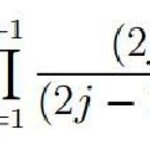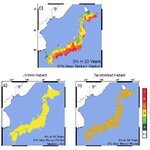Mathematics
Football teams have been wearing numbers since Arsenal experimented with putting their players in numbered shirts in 1928 (it didn’t bring them much luck – they lost 3-2 to Sheffield Wednesday). But it was Manchester United that made the number seven shirt iconic by putting their best players in it – perhaps most famously David Beckham, who said:
It always was an inspiration for me, but it was never my shirt. It was George Best’s, Bryan Robson’s, Eric Cantona’s. The only reason I wanted to wear the No 7 shirt was because of these players. I didn’t see it as an intimidation, I saw it as a…

“Beware of false knowledge; it is more dangerous than ignorance.” - George Bernard Shaw, Man and Superman, 1903.
It ain’t what you don’t know that gets you into trouble. It’s what you know for sure that just ain’t so. Mark Twain (1835-1910)
The Fallacy:
The so-called “Greenhouse effect” is one of the most persistent fallacies in popular science. It is a flawed speculation left over from the late 19th century, when it was first entertained by such scientific luminaries as Joseph Fourier, John Tyndall, and Svante Arrhenius.
In fact, however, the so-called “greenhouse gases” do not “trap”…

A Sino-Italian workshop on Applied Statistics was held today at the Department of Statistical Sciences of the University of Padova. The organizers were Alessandra Brazzale and Alessandra Salvan from the Department of Statistical Sciences, and Giorgio Picci from the "Confucius Institute".
The worshop featured ten presentations, four of which by Chinese colleagues. As I have made some friends in that Department thanks to the AMVA4NewPhysics network, I decided it was a good idea to follow at least some of the talks -this gave me a chance to exchange a few words with some of them, and to…

When a system is well understood, a well-constructed mathematical model of that system can make realistic predictions based on the data sets fed into it. However, when a system is not well-understood, but one insists on making a mathematical of it, anyway, the holes in the database and the gaps in our knowledge must, necessarily, be filled with assumptions and estimates, instead of established principles and actual data.
The poorer our understanding of the system, the greater the impact of those simplifying assumptions and arbitrary estimates on the modeled results.
Today, realistic…

Here is a problem with truly huge numbers, thought to be unsolvable.
Imagine that you have 128 tennis balls, and can arrange them in any way you like. How many arrangements are possible? According to a new paper, the answer is about 10^250, also known as ten unquadragintilliard: that's a number so big that it exceeds the total number of particles in the universe.
Such “configurational entropy” - a term used to describe how structurally disordered the particles in a physical system are - could lead to a model for the sort of maths that would be needed to solve bigger problems still,…

Mariners have long spoken of 'walls of water' appearing from nowhere in the open seas, that is why freak waves are called freak waves.
Oceanographers have disregarded such stories and instead suggested that rogue waves - enormous surface waves that have attained a near-mythical status over the centuries - build up gradually and have relatively narrow crests, but new research says rogue (or freak) waves can emerge suddenly, being preceded by much smaller waves. At least in mathematical models published in Proceedings of the Royal Society A.
Professor Thomas Adcock, of Oxford's Department of…

Falling oxygen levels caused by global warming could be a greater threat to the survival of life on planet Earth than flooding, according to an estimate led by Sergei Petrovskii, Professor in Applied Mathematics from the University of Leicester's Department of Mathematics.
Their mathematical model estimates that an increase in the water temperature of the world's oceans of around six degrees Celsius, which the most aggressive claims (two degrees is the scientific consensus) say could occur as soon as 2100, could stop oxygen production by phytoplankton by disrupting the process of…

In 2012, the enthusiasm for poll averaging reached a fever pitch. Very few people were critical of it and instead talked about how science had taken over predictive politics. (1)
I was critical of the accuracy and swam against the tide of those in media gushing about the new frontier opened up by New York Times statistical pundit Nate Silver and others, which posited that we could now predict outcomes with unprecedented accuracy. 'They don't do any polls,' I noted, 'So we are supposed to believe there is some miracle of weighting they do in polls done by someone else.' It's the same flaw we…

While most people associate the mathematical constant π (pi) with arcs and circles, mathematicians are accustomed to seeing it in a variety of fields. Two University of Rochester scientists have found it lurking in a quantum mechanics formula for the energy states of the hydrogen atom.
"We found the classic 17th century Wallis formula for pi, making us the first to derive it from physics, in general, and quantum mechanics, in particular," said Tamar Friedmann, a visiting assistant professor of mathematics and a research associate of high energy physics, and co-author of a paper published this…

Major League Baseball can help understand why maps used to predict shaking in future earthquakes often do poorly.
Earthquake hazard maps use assumptions about where, when, and how big future earthquakes will be to predict the level of shaking. The results are used in designing earthquake-resistant buildings. However, as the study's lead author, earth science and statistics graduate student Edward Brooks, explains "sometimes the maps do well, and sometimes they do poorly. In particular, the shaking and thus damage in some recent large earthquakes was much larger than expected."
Part of…